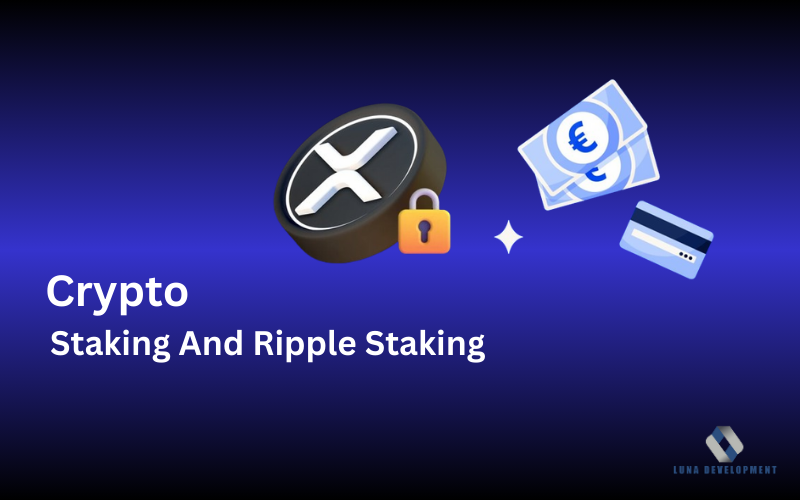Ripple Staking:
A unique consensus algorithm called Ripple Protocol Consensus Algorithm or RPCA is used to run Ripple, which is a cryptocurrency and digital payment protocol.
Ripple depends upon a group of trusted validates to confirm transactions as compared to traditional proof-of-work (PoW) systems in which miners are required to solve mathematical problems.
Two things are considered before choosing a validator, one is the reputation of the validator and the second one is the amount of Ripple’s native token (XRP) they are holding.
The relationship between Crypto staking and Ripple staking lies in the similarities of staking concepts but each Blockchain shares specific and unique mechanisms.
Crypto staking:
By participating in the Blockchain networks operation, cryptocurrency holders are earning a good amount of passive income by crypto staking as it has become a popular method of earning for cryptocurrency holders.
In staking a certain amount of cryptocurrency is locked in a wallet which helps to support the security and functionality of a network.
As a reward, participants receive additional coins or tokens. Proof -of-stake i.e. PoS and Delegated-proof-of stake i.e. DPos are Blockchain networks which are integral to this process and ripple staking is one notable example.
Consensus Mechanism:
The proof-of-stake mechanism is common in both Ripple and Crypto staking. Generally in crypto staking, validators stake their cryptocurrency to support the network. They also validate transactions, and support and secure their Blockchains.
In Ripple’s case, the Ripple Protocol Consensus Algorithm is used which runs based on the reputation of validators and the amount of XRP they hold.
Reward System:
Opportunity to earn rewards is a big incentive, used in both Ripple and crypto staking. People get extra rewards as coins or tokens as a result of locking their assets and taking part in network maintenance.
Reward structure may vary but the underlying principle is the same in different Blockchain projects.
Network Security and Decentralization:
Both Ripple and crypto staking in general aid the security and decentralization of a blockchain. When users participate in the consensus process of ripple and crypto staking they in return play a vital role in maintaining the integrity of respective networks. This helps in robusting the trustworthy process of the blockchain ecosystem.
Long-term Commitment:
In staking both ripple and crypto staking helps in promoting long-term commitment to the network.
In both staking, stakers are encouraged to hold their assets which as a result facilitates stability and resilience within the ecosystem.
Conclusion:
Despite the commonalities, the specifications of staking, its reward distribution model, its technological details and governance mechanism can vary between different Blockchain projects.
The shared foundation of proof-of-stake principle between ripple and crypto staking is the main reason for the relationship between ripple and crypto staking but despite this relationship, unique implementations give specific characteristics to each staking network.
Staking is a prominent feature in the dynamics of the crypto investment landscape and Ripple’s unique consensus algorithm shows diversity within the crypto world.
Visit Luna Development for more information:

